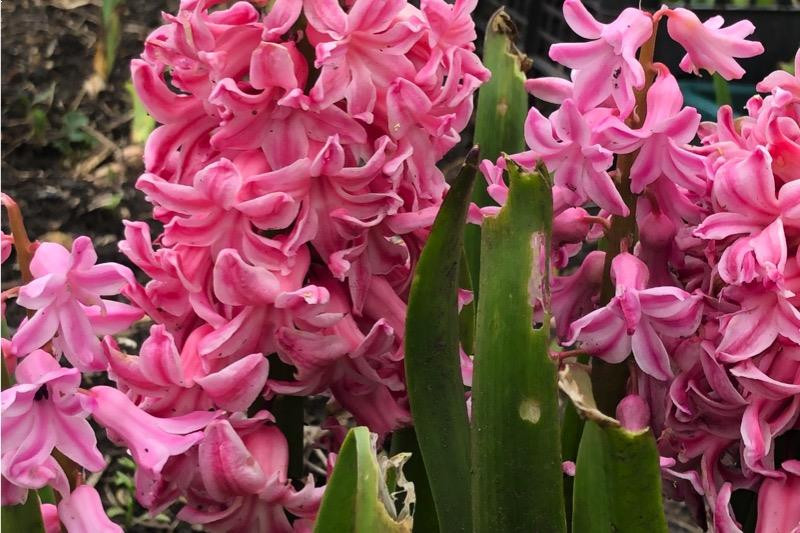There’s a special thrill that comes with burying your dry bulbs in Autumn & early Winter, followed by months of anticipation till Spring, each with their own payoff:
Daffodils are cheerful, Tulips are romantic, Snowdrops are cutie pies, and Hyacinths are just too much, I need to lie down for a while!
These and other early flowering bulbs are constantly referred to as The Heralds of Spring, and as such they need to get in place early, so one needs to plan ahead: that’s why it’s still summer, but we’re already talking about planting Spring bulbs in Autumn.
Order Now, Plant Later, Enjoy Even Later!
A vibrant Spring garden indeed starts with bulb planting in Autumn, but the bulb order books are open now and popular varieties sell out well before planting time.
July is the time to lock in your top picks of the best quality bulbs for Autumn delivery. It may seem a bit early to think about next Spring’s flowers, but leaving it for later puts you at the mercy of what everyone else didn’t want!
Pointers for Preparation Prior to Planting Pulbs*
- Mark your bulb-less locations: While evidence of your bulbs is still visible above ground (probably too late in July…), mark the spots with no bulbs. By autumn, all signs of your existing spring bulbs should be long gone, so you won’t see precisely where to put the new ones.
- Don’t bother improving most soils – mulch is plenty: Bulbs for borders are tough, and do not need improved soil, especially if you plan to lift them after flowering. They already contain all the energy they need to flower, then they recharge using their leaves while the surrounding plants (which overshadow them by late spring) are still waking up. Most are well adapted to rocky or poorly fertile soils, and their roots aren’t deep because they only need them for a while in Spring: a pinch of rootgrow fungi is the only boost we recommended.
With that being said, if your soil is sandy and dry, it’s easy to fork in a little well rotted compost only down to about 25-30cm, mainly to hold moisture. Assuming you have normal or heavy garden soil and plan to leave it bare till planting time, simply mulch with any locally acquired vegetable matter (on the soil surface, it doesn’t matter if it’s composted: fresh grass clippings are lovely, plain brown cardboard is a busy gardener’s friend for suppressing weeds). - Clear the area of weeds & tough grass for naturalising bulbs: For best results, you want the bulbs that you do leave in place year after year to be surrounded by lawn grass, or mixes of wildflowers and clumping meadow grass, or perennial plants and deciduous shrubs; shade tolerant bluebells, cyclamens and snowdrops can carpet woodland floors, where the trees prevent most weeds and grass from taking over.
Wild bulbs certainly do grow among weeds and couch-type grasses with aggressive roots, but gradually lose out, so by thoroughly weeding then seeding with lawn and/or gentler meadow grasses well in advance, your wildflowers will flourish unimpeded.
As in point 2 above, if you don’t want grass or other plants yet, then mulch over bare soil after weeding so it doesn’t bake dry in the arid British summer (nor wash away in monsoon season!) - Experiment: Although each bulb surely has preferred conditions, they are rugged plants and can surprise you with how well they grow in places the books say are no good. When I buy a bag of a given bulb variety, I often pop a couple of them in a terrible location (too dark, too wet, too overgrown, or anywhere in Bermondsey) that is visible to me as I potter around – even if they only manage one season there, it’s an easy lesson to see how far you can push them in your designs.
*No one notices when you say it
| Species | Bestselling Varieties | Flowering Months | Sold Dry in Autumn? | Sold In-The-Green in Spring? |
|---|---|---|---|---|
| Daffodils (Narcissus) | ‘Ice Follies‘ AGM, Naturalising Lawn Mix | March-April | Yes | Wild Only |
| Snowdrops (Galanthus) | Galanthus nivalis Flore Pleno AGM | January-March | Yes | Yes |
| Winter Aconite | Eranthis hyemalis AGM | January-March | No | Yes |
| Crocus | Great in a natural mix, and Tricolor is a multicoloured fave. | February-March | Yes | |
| Iris reticulata | ‘Painted Lady‘ | February-March | Yes | |
| Anemone | A. blanda ‘White Splendour‘ | March-May | Yes | |
| Tulips | This huge group needs breaking down by colour, but the Darwin Hybrid and the Parrot Mix are always winners! | April-May | Yes | |
| Bluebells | Hyacinthoides non-scripta (Native, not Continental) | April-May | No | Yes |
| Muscari | M. armeniacum (blue) & ‘White Magic‘ | April-May | Yes | |
| Hyacinth | Jan Bos (Red), City of Haarlem (Yellow) & Delft Blue | March-April | Yes | |
| Chionodoxa | March-April | Yes | ||
| Scilla | Scilla siberica, Scilla mischtschenkoana | March-April | Yes | |
| Fritillaria meleagris | F. meleagris (Red) & White ‘Alba‘ | April-May | Yes | Yes |

